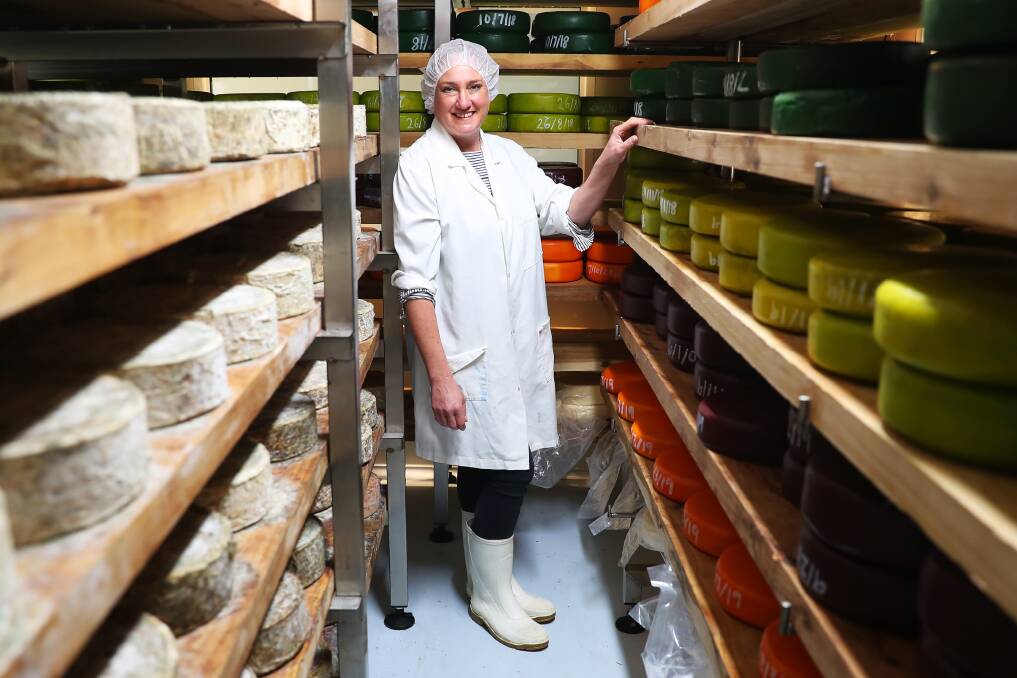Unlocking the Keys of Artisanal Cheese Making: A Step-by-Step DIY Overview
In the world of culinary craftsmanship, artisanal cheese making stands as a testament to the delicate equilibrium in between custom and technology. As we embark on this journey to demystify the art of creating splendid cheeses, we are faced with a tapestry of skills and tricks waiting to be untangled.
Picking the Right Milk
When embarking on the journey of artisanal cheese making, the choice of milk plays a critical duty in identifying the high quality and features of the last product. The kind of milk picked impacts the flavor, structure, and generally profile of the cheese.
Furthermore, the resource of the milk, whether from cows, goats, lamb, or buffalo, contributes distinct flavors and features to the cheese. Each kind of milk brings its own nuances, allowing for a vast array of cheese varieties to be crafted based on the picked milk.
Culturing and Coagulating
To start the cheese-making process, the essential steps of culturing and coagulating should be very carefully carried out to change milk into curds and whey. The type of culture used can significantly impact the taste, structure, and ripening of the final cheese product.

The timing and temperature level control throughout culturing and coagulation are vital factors that affect the final end result of celebrity. Proper implementation of these steps is necessary to guarantee the desired appearance, flavor, and consistency of the artisanal cheese being generated.
Draining and Pressing Curds
After the milk proteins have actually coagulated and the curds have been cut to launch whey, the next crucial step in artisanal cheese making involves draining pipes and pressing the curds to achieve the preferred texture and consistency of the last cheese item. The time for draining can differ depending on the kind of cheese being made and the wanted wetness content.
When the curds have actually sufficiently drained pipes, the following action is pressing. Pressing aids expel any type of continuing to be whey and compacts the curds to create a solid cheese wheel. Pressing can be done utilizing specialized cheese presses that use consistent and gentle pressure over a time period. The period and stress used throughout pushing will certainly affect the last texture of the cheese, from creamy and soft to hard and firm. Correct draining and pressing are critical actions that considerably affect the high quality and attributes of the artisanal cheese being produced.
Aging and Flavor Methods
Executing thorough aging and flavoring strategies discover this info here is critical in boosting the depth and intricacy of artisanal cheeses, elevating their taste profiles to exquisite degrees of refinement and sophistication. Aging plays a critical role in creating the special tastes and structures that identify artisanal cheeses.
Seasoning methods additionally contribute substantially to the final taste of artisanal cheeses. Cheesemakers might pick to introduce added tastes by incorporating active ingredients such as natural herbs, spices, or also fruits right into celebrity during the production procedure. In addition, some cheeses are washed or massaged with numerous liquids, such as brine or alcohol, to improve their textures and flavors.
Covering and Saving Cheeses

Conclusion
To conclude, understanding the art of artisanal cheese making includes meticulously selecting the appropriate milk, following specific culturing and coagulating processes, draining and pushing curds successfully, and utilizing different aging and flavoring strategies. By following these steps faithfully and with attention to information, you can develop your own tasty and one-of-a-kind cheeses in your home. Bear in mind to cover and store your cheeses appropriately to guarantee ideal taste and texture development. Delighted cheese making!
Each type of milk brings its own nuances, enabling for a vast range of cheese varieties to be crafted based on the chosen milk.After the milk proteins have coagulated and the curds have useful link been cut to launch whey, the next essential step in artisanal cheese making includes draining and pressing the curds to achieve the preferred texture and consistency of the last cheese product. Many cheeses ought to be wrapped in wax paper or cheese paper to allow them to breathe while securing them from drying out. For cheeses that need to continue aging, such as bloomy peels or cleaned peels, guarantee they are kept in a great atmosphere like a cheese cave or a refrigerator set to the proper temperature level. By paying interest to the wrapping and storage of artisanal cheeses, cheese manufacturers and fanatics can protect the stability of these delicacies and fully appreciate their intricate flavors.